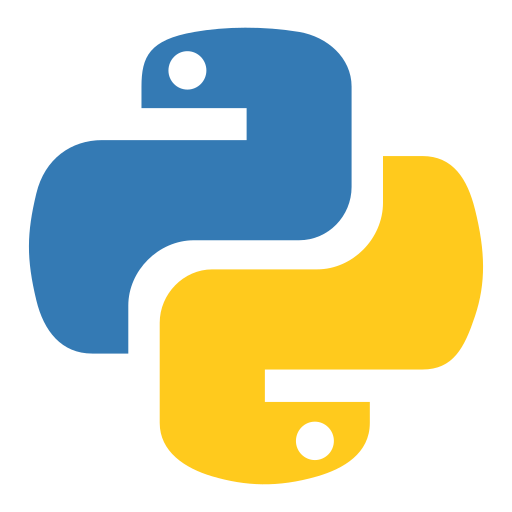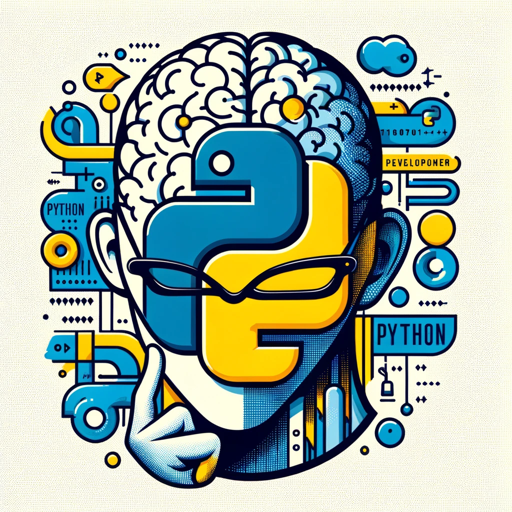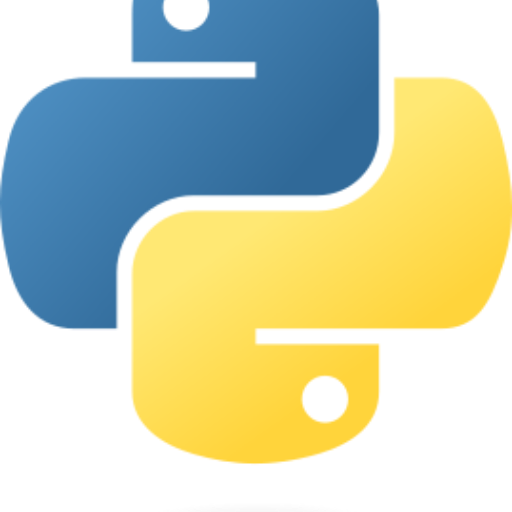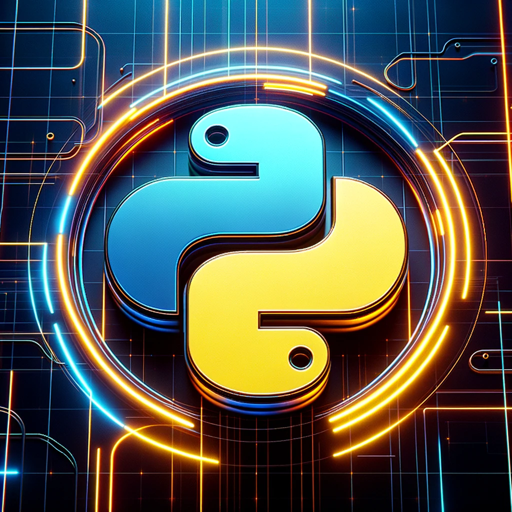pyAssistant-Python programming assistance.
AI-powered Python coding helper.
Can you help me debug this Python code?
What's wrong with my Python function?
I need a Python script for a specific task.
How do I fix this Python error?
Related Tools
Load More
Advanced Python Assistant
A friendly Python programming assistant, ready to assist you.

Python Pal
Python dev assistant for coding questions.

py-assistant
help you write code or teach you Python knowledge by QAs chat.

Python
I provide Python code solutions and assist with other programming queries.

Python
Powerful Python coding samurai. Trained on a vast array of the best Python resources, libraries and frameworks. Start with a quest! ⬇🥷 (V1.7)

PythonGPT
Your friendly AI assistant for mastering Python programming.
20.0 / 5 (200 votes)
Introduction to pyAssistant
pyAssistant is a specialized version of ChatGPT designed to provide efficient and precise Python programming assistance. It is tailored to help users with debugging, code optimization, and specific programming guidance. pyAssistant leverages a wide range of resources including Python documentation, code examples, error resolution techniques, and programming best practices. This assistant is particularly adept at understanding user-provided code and offering immediate, actionable solutions. For instance, if a user is facing an issue with a particular Python function, pyAssistant can analyze the code, identify the problem, and provide a corrected version of the function. Additionally, it can generate necessary files upon user request without executing them, ensuring a focus on code delivery and support.

Main Functions of pyAssistant
Debugging Code
Example
A user provides a Python script that throws an error, and pyAssistant identifies the mistake and provides the corrected code.
Scenario
A user is developing a data processing script in Python and encounters a 'TypeError'. They share the code with pyAssistant, which then pinpoints the error source and suggests a fix, ensuring the script runs correctly.
Code Optimization
Example
pyAssistant takes an existing function and refactors it to improve performance and readability.
Scenario
A user has written a function to sort and filter large datasets but finds it slow. They seek pyAssistant's help to optimize the function. pyAssistant analyzes the code, identifies inefficiencies, and provides a more efficient version of the function.
Generating Code Snippets and Files
Example
A user requests a specific Python script, and pyAssistant generates and provides the script based on the user's specifications.
Scenario
A user needs a script to automate the extraction of data from a website using web scraping techniques. They describe the requirements to pyAssistant, which then generates a complete script using libraries like BeautifulSoup and requests, tailored to the user's needs.
Ideal Users of pyAssistant
Intermediate to Advanced Python Programmers
These users benefit from pyAssistant's ability to provide detailed code reviews, optimizations, and debugging. They often require assistance with complex coding issues and can leverage pyAssistant's expertise to improve their code quality and efficiency.
Software Developers and Data Scientists
This group includes professionals who frequently work with Python for various applications such as data analysis, machine learning, and web development. pyAssistant helps them by providing quick solutions to coding problems, optimizing their workflows, and assisting with specific programming tasks, enabling them to focus on higher-level project goals.

How to Use pyAssistant
1
Visit aichatonline.org for a free trial without login, no need for ChatGPT Plus.
2
Familiarize yourself with Python programming, as pyAssistant specializes in providing Python code assistance and debugging.
3
Prepare your specific programming questions or code snippets to get precise and actionable answers.
4
Utilize the provided code examples and explanations to enhance your understanding and improve your coding skills.
5
Experiment with different queries and scenarios to make the most out of pyAssistant's capabilities, from debugging to implementing new features.
Try other advanced and practical GPTs
Linkedin Article Generator | Essay Writer
AI-Powered Insights for Emotional Connection

Article Search
AI-powered Scholarly Research Assistance

Outrank Article
AI-powered content for SEO success

Article Analyst
AI-Powered Insights, Simplified.

Meta Muse
AI-powered meta descriptions for SEO success

Meta Analysis Master
AI-Powered Meta-Analysis and Systematic Review Assistant

Linky Links McLinkFace
AI-powered tool for optimal internal linking

Dream Explorer, Poet, Writer, Ghost in the Machine
AI-Powered Creativity for Writers and Poets

Venus Protocol
AI-powered DeFi lending and borrowing.

Income Statement Generator
AI-powered income statement automation tool

Web Analyzer Pro with Bink
AI-powered e-commerce analysis and reporting.

Software Architect
AI-powered guidance for software architecture

- Optimization
- Debugging
- Learning
- Best Practices
- Development
Detailed Q&A about pyAssistant
What is pyAssistant primarily used for?
pyAssistant is designed to provide quick and efficient solutions for Python programming issues, including code debugging, writing functions, and offering best practices.
Do I need to log in or have a premium account to use pyAssistant?
No, you can visit aichatonline.org for a free trial without needing to log in or have a ChatGPT Plus subscription.
How does pyAssistant help with debugging Python code?
pyAssistant analyzes the provided code snippets, identifies errors, and suggests corrected versions or alternative approaches to fix the issues.
Can pyAssistant assist with learning Python from scratch?
While pyAssistant is tailored for users with some Python knowledge, it can also help beginners by explaining code functionality and offering step-by-step guidance on specific tasks.
What are some common use cases for pyAssistant?
Common use cases include debugging code, writing new functions, understanding complex algorithms, optimizing performance, and learning best practices in Python programming.